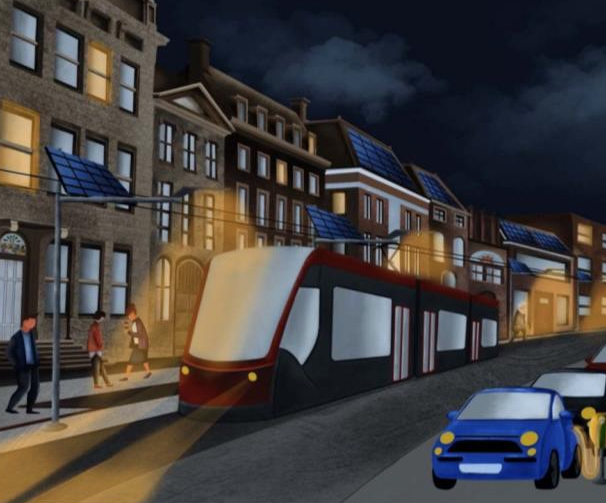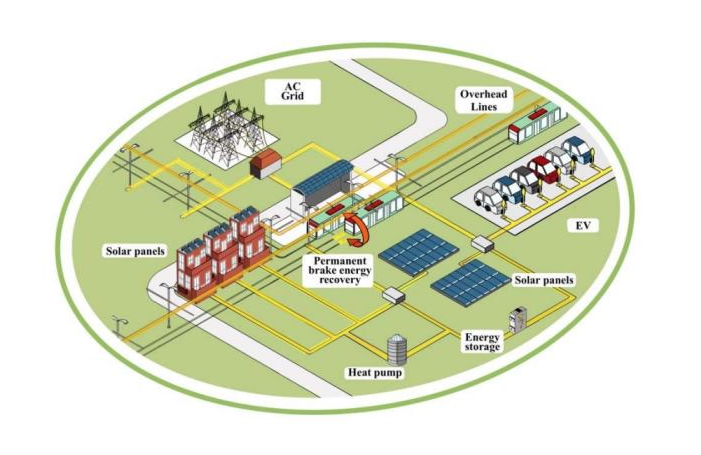From Traction Grid to Smart DC Electricity Grid
Future inner-city development in the Netherlands is strongly influenced by the energy transition and climate policies.
Centre of Expertise Mission Zero

Future inner-city development in the Netherlands is strongly influenced by the energy transition and climate policies. The transition in energy production, energy use and mobility in the built environment, which should enable a climate-neutral city, place new demands on the use of space, the design of energy networks and other infrastructure, and on organizational and administrative frameworks. Increasing electrification (e.g. heat pumps), increasing production of renewable energy and increase in electric mobility in the built environment is a major challenge. Grids are coming under pressure. Reinforcement is often costly and causes a lot of public nuisance (excavation work). Smart solutions and/or combinations can help here, using existing infrastructure. In time, regional solutions can be offered by scaling up to the ProRail grid, for example, to feed solar PV meadows into the system. Moreover, additional power for other energy needs could be provided, such as heavy-duty bus loading stations in the region. This proposal therefore focuses on the opportunities for incorporating the existing DC railway electric traction network of public transport for distribution and, at a later stage, into a smart bi-directional grid. This involves trams, mass rapid transit and trolleybuses. Possible applications are further enhanced by the emergence of charging plazas for electric buses, with similar (poor) utilization of connection capacity. Finally, it is possible to scale up to train infrastructure (ProRail), whose potential is many times greater still.

Goal of the project
The project contributes to the electrification of the energy system in the built environment through the better utilization of existing electrical infrastructure and enhances electrification at the area level. This particularly occurs through improvements and new functionalities for the current local electricity system and for local electricity exchange, aligning with MMIP5 of the National Climate Agreement goals. The technical feasibility of using DC traction networks as distribution grids and as bi-directional power grids is being tested at lab scale and in real situations in Amsterdam and The Hague (led by HHS and HvA i.s.m. with the public transport companies). The technical, safety, and spatial opportunities and barriers for scaling up to substation and to multiple segments will be investigated (with input from Dynniq and DC Opportunities). Finally, the economic, organizational and legal aspects surrounding the tram stop as a future “energy stop” will be examined (with input from Witteveen and Bos) with the potential upscaling to train infrastructure. A sounding board group will guide the project (with GvB and HTM).
Final product / intended results
The project results in the technical specifications for coupling renewable generation, new electricity demand and storage in the DC traction network and its regulation. Finally, technical economic, legislative and organizational opportunities and bottlenecks for scaling up are intensified. Based on these results, recommendations for policy makers and legislators will follow.
Project leader
Pepijn van Willigenburg
Researchers involved
- Peter van Duijsen
- Steven O'Loughlin
- Diëgo Zuidervliet
- Sander Mertens
Project start and end date
October 1, 2021 with end date September 2023
Programmes and / or minors involved
- Electrical engineering (course)
- Power (minor)
- Energy Positive City and Data Science (minor)
- Renewable Energy and Power (elective)
Funding
Grant applications are currently pending.
Partners
The consortium consists of Stichting Hogeschool van Amsterdam HvA, Witteveen and Bos, Dynniq Energy BV, and DC Opportunities R&D B.V. In addition to the project partners, GvB, HTM, ProRail and Stichting Gelijkspanning Nederland are involved with this project as associate partners.